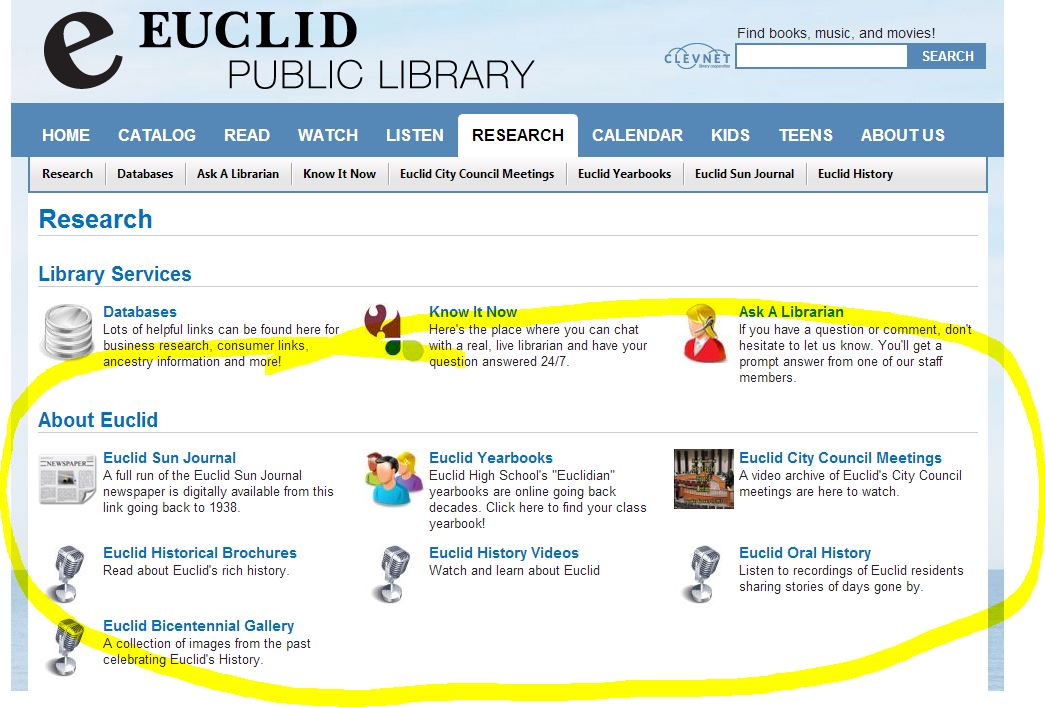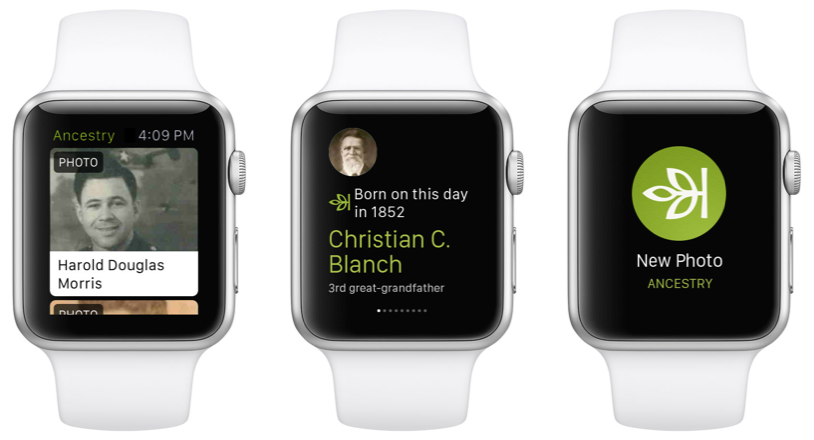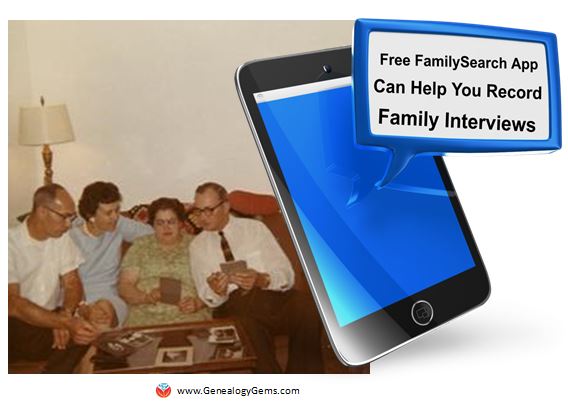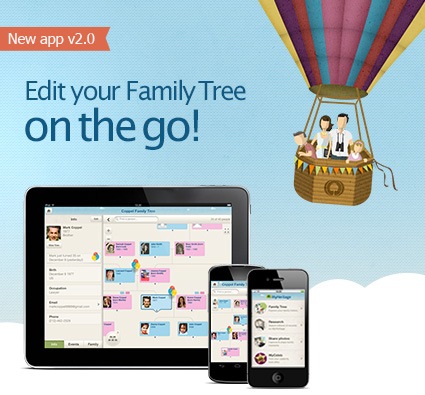by Lisa Cooke | Apr 23, 2015 | 01 What's New, 1950, Brick Wall, Research Skills
When we try to research our family history from recent decades, we often find privacy barriers: U.S. census records for 1950 and beyond

1950s Fords by Bob P.B. on Flickr Creative Commons. Some rights reserved.
are closed, as are many vital records. Here are some ideas for finding family history in the 1950s and beyond:
1. Interview relatives. The good news is that in many families, there are relatives around who remembers the 1950s. If there’s not, then look to the memories of the next living generation.
Interviewing a relative is one of the most fun and meaningful ways to learn your family history. You can ask specific and personal questions, deepen your relationships with those you interview and gain a better understanding of the lives that led to you. Older people often love to have someone take a sincere interest in them. The free Family History Made Easy podcast episode 2 has a great segment on interviewing your relatives.
2. Read the newspaper. Use newspapers to find obituaries and discover more about daily life, current events, popular opinions of the time, prices for everyday items and more. It’s getting easier than ever to find and search digitized newspapers online, but more recent papers may still be under copyright protection.
Use online resources like to discover what newspapers served your family’s neighborhood, or even whether an ethnic, labor or religious press would have mentioned them. In the US, I always start with the US Newspaper Directory at Chronicling America to search for ALL newspapers published in a particular place and time, as well as the names of libraries or archives that have copies of these papers. Historical societies and local public libraries are also wonderful places to look for newspapers. My book, How to Find Your Family History in Newspapers, teaches readers what to look for in papers and how to locate them online and offline.
3. Search city directories. By the 1950s, most towns and cities published directories of residents, mostly with telephone numbers. I use annual directory listings to track buy generic medication online families from year to year. These might give you your first clue that someone moved, married, separated, divorced or died! I can often find their exact street address (great for mapping!), who lived at the house and sometimes additional information like where they worked, what their job was or who they worked for.
Ancestry.com has over a billion U.S. city directory entries online, up to 1989. But most other online city directory collections aren’t so recent. Look for city directories first in hometown public libraries. Check with larger regional or state libraries and major genealogical libraries.
4. Search for historical video footage. YouTube isn’t just for viral cat videos. Look there for old newsreels, people’s home movies and other vintage footage. It’s not unusual to find films showing the old family neighborhood, a school or community function, or other footage that might be relevant to your relatives.
Use the YouTube search box like you would the regular Google search box. Enter terms like “history,” “old,” “footage,” or “film” along with the names, places or events you hope to find. For example, the name of a parade your relative marched in, a team he played on, a company she worked for, a street he lived on and the like. It’s hit and miss, for sure, but sometimes you can find something very special.
My Contributing Editor Sunny Morton tried this tip. Almost immediately, with a search on the name of her husband’s ancestral hometown and the word “history,” she found a 1937 newsreel with her husband’s great-grandfather driving his fire truck with his celebrity dog! She recognized him from old photos and had read about his dog in the newspapers. (Click here to read her stunned post.) Learn more about searching for old videos in my all-new second edition of The Genealogist’s Google Toolbox, which has a totally updated chapter on YouTube.
Click here to read more about the 1950s U.S. census: when it will be out and how you can work around its privacy restrictions.
by Lisa Cooke | Dec 30, 2014 | 01 What's New, British, DNA

Earliest surviving portrait of Richard III. Wikimedia Commons image.
An article recently published in Nature Communications confirmed the identity of the remains of King Richard III by DNA testing. This result wasn’t a huge surprise, but there were some eyebrow-raising findings along the way. More to the point, now a celebrity case study teaches us more about how to use DNA in family history research.
Prior to the genetic investigation of the skeletal remains presumed to be that of Plantagenet King Richard III, there was already mounting evidence that this was indeed his body. Genetic genealogists can take cues from this research to learn how to more fully integrate your genetic testing into your genealogy.
While these researchers were able to use radiocarbon dating and skeletal analysis methods that most of us won’t have access to, they did pore over a substantial amount of historical evidence to substantiate the last known whereabouts of Richard III. The archaeological, skeletal, and historical evidence were overwhelmingly in favor of this positive identification. But it was the genetic evidence that provided the last, ahem, nail in the coffin.
In this case the nail was made of mitochondrial DNA, or mtDNA. King Richard shares his mtDNA with anyone who is also related in a direct maternal line to his mother. There were two such candidates found, both sharing mtDNA with the skeleton presumed to be King Richard, thus further verifying its identity. In fact, lead researcher Turi King said of the findings, “If you put all the data together, the evidence is overwhelming that these are the remains of Richard III.”
Of interesting note to us as genetic genealogists is that one of the two mtDNA samples used for reference did have one difference from the mtDNA signature shared by the other individual and the skeleton. This did not jeopardize the integrity of the results, but rather provided a good case study in how DNA does change over time.
You would think that the DNA match confirming the identity of the skeleton would be the biggest news out of this round of DNA testing. But along with the direct maternal line testing, there was also direct paternal line testing to try to verify the paternal line of the skeleton.
Genealogists worked tirelessly to identify direct paternal descendants of Richard III’s great-great grandfather Edward III and five were found and tested. Their results revealed not one but THREE different paternal lines.
While the results were not quite as expected, they weren’t exactly unexpected either, as there are plenty of royal rumors of non-paternity (click here for a summary). Watch a brief video discussion of the yDNA results here:
Again, the YDNA portion of the study provides a great case study for us in how to use YDNA, namely that it takes a lot of traditional genealogical work to find direct paternal line descendants to be tested, and that the results are conclusive, but can sometimes provide more questions than answers.
The Richard III DNA drama has started many families talking about “doing” their own DNA. Learn how with my series of quick guides (purchase all 4 laminated guides or the digital download bundle for the best deal);
Visit my website to learn about expert consultations with me. You’ll get customized guidance on which tests to order and how to maximize your results for your genealogy research.
by Lisa Cooke | Jul 30, 2014 | 01 What's New, Ancestry, Beginner, Book Club, Inspiration, Libraries, Research Skills

genealogy at the public library
This week, I’m researching at the Allen County Public Library in Fort Wayne, Indiana, which has one of the best public library genealogy collections in the United States. They’ve got more than half a million items on microfilm and fiche and 350,000 more in print. Among these items are nearly 50,00o city directories; 55,000 compiled family histories; most National Archives microfilmed military service and pension records….Okay, I’ll stop before you get jealous.
But in fact, MOST public libraries have some good genealogy resources. Have you checked out the library near you lately? OR the local history and genealogy collection in a public library near where your ancestors lived? You may likely find these 5 great resources:
- Access to paid subscription genealogy websites like Ancestry.com Library Edition, HeritageQuest Online, Fold3 and other genealogy databases.
- Local historical newspapers–or at least obituaries from them. ALSO access to historical newspaper websites like GenealogyBank.com which may have papers you’ll never travel to see in person.
- City directories, old maps and/or local histories for that town.
- Surname files. These aren’t at every public library, but you’ll often find them in libraries that have dedicated genealogy rooms. These likely won’t be neatly organized files with perfect family trees in them, but collections of documents, bibliographic references and correspondence relating to anyone with that surname.
- Other surprising local history resources. For example, my hometown library in Euclid, Ohio, has online collections of Euclid newspapers, history, yearbooks and oral histories!

What does your library have? Browse its website or call and ask about its local history and genealogy collections. You might even Google the name of the county with the phrases “public library” and “local history” or “genealogy.” Another branch of the same library system (not in your own or ancestor’s town but nearby) might have just what you need to find your family history!

Listen to the Family History: Genealogy Made Easy podcast by Lisa Louise Cooke. It’s a great series for learning the research ropes and well as refreshing your skills.
Want to learn more about doing genealogy at the public library? Check out two recently republished episodes of Lisa’s Family History Made Easy podcast:
Episode 34: Do Your Genealogy at the Public Library, Part 1 Genealogy librarian Patricia VanSkaik talks to us about researching at public libraries. She shares what kinds of things may be at the library (including unique resources), how to prepare for a visit and lots of great tips for making the most of your research time there.
Episode 35: Do Your Genealogy at the Public Library, Part 2 We go deeper into genealogy research at the public library. Genealogy librarian Patricia VanSkaik is back to talk about how to search an online library card catalog including advanced search methods, the unique collections that may be at public libraries, how to ask for exactly what we want, and the obstacles librarians face when it comes to cataloguing large and unique collections that may interest genealogists.
by Lisa Cooke | Jul 23, 2014 | 01 What's New, Ancestry, Apps, FamilySearch, MyHeritage, Oral History, Photographs, Smartphones, Technology
Have you downloaded the apps that go with your favorite genealogy websites? You should! And if it’s been awhile, you should do it again. Why? They just keep  getting better!
getting better!
Here’s a rundown of new or improved apps from
- Ancestry.com,
- FamilySearch.org, and
- MyHeritage.com:
Updated Ancestry App: Now A Continuously Swiping Tree
The old version of the Ancestry app was a great start, but didn’t actually have a tree interface on it. You could see lists of family members in your tree, but not in pedigree format. The new version (still FREE) has a redesigned look that, at least for iOS users, includes what Ancestry calls a “continuously swiping tree.” (The way Ancestry programmers made this happen was unique enough they got a patent for the process–read about it on the Ancestry blog.)
Here’s a summary of what the iPhone and iPad apps can do (taken from the Ancestry site):

- New: Redesigned look for sleeker, more intuitive use
- New: Build your tree faster by connecting to Facebook and your contact list
- New: Read about the lives of your ancestors through story-like narrative
- Preserve memories by scanning and adding photos to your tree
- Explore high-res images of historical documents and records
- Access the world’s largest online family resource with more than 12 billion records
- Receive Hints to help reveal new family connections by finding records and photos for you
- Fully redesigned for iOS7
Click here to download the Ancestry app for iPad, iPhone and Android.
New FamilySearch Apps: Tree and Memories
 Two new FREE mobile apps, FamilySearch Tree and FamilySearch Memories, help users add information to their FamilySearch.org trees. The folks at FamilySearch describe the apps this way:
Two new FREE mobile apps, FamilySearch Tree and FamilySearch Memories, help users add information to their FamilySearch.org trees. The folks at FamilySearch describe the apps this way:
FamilySearch Tree makes it easy to add photos, stories, and audio recordings to ancestors in FamilySearch trees.
- Browse your family branches and see portraits of relatives you’ve never seen.
- Discover facts, documents, stories, photos, and recordings about your ancestors.
- Easily add memories and records about your relatives.
- Preserve and share those old photos and documents that are hidden away in storage.
- Adding or updating ancestor details like names, dates, and relationships will be available coming soon.
- Available for iOS 7+ and Android 2.3+
Click here to download the FamilySearch Tree App from the Apple App Store (iOS)
Click here to download the FamilySearch Tree App from the Google Play App Store (Android)
FamilySearch Memories makes collecting, preserving, and sharing your favorite family memories (photos, stories, and spoken words) easy and convenient wherever you are.
- Snap photos of any family event, or take photos of old photos and documents.
- Record audio interviews with family members and capture details of their life stories and favorite memories.
- Write family stories, jokes, and sayings with the keyboard, or use the mic key to capture what you say.
- Enrich written stories by adding descriptive photos.
- Identify and tag relatives within a memory to automatically add it to their collection in Family Tree.
- Available for iOS 7+
Click here to download the FamilySearch Memories App from the Apple App Store (iOS)
Everything you add with either of these apps syncs with FamilySearch.org.
Updated MyHeritage App: Now Access Your Family Photos
 Now your MyHeritage family website can always be at your fingertips–along with all your family photos. Features of the newly-updated version of the MyHeritage app:
Now your MyHeritage family website can always be at your fingertips–along with all your family photos. Features of the newly-updated version of the MyHeritage app:
- NEW: View all your photo albums and family tree photos;
- Easily view and update your family tree anywhere you go;
- Search 5.3 billion historical records;
- Fully sync with your family site and Family Tree Builder software;
- Supports 32 languages.
Click here to download or upgrade Family Tree Builder 7.0 so you’ll be ready to view and edit your tree with the free mobile app.
Click here to download the MyHeritage app from the App store.
Click here to download the MyHeritage app from Google Play.
So…doublecheck your mobile devices! How long since you’ve updated YOUR genealogy apps?



 Getting Started: Genetics for Genealogists;
Getting Started: Genetics for Genealogists;


 getting better!
getting better!
 Two new FREE mobile apps, FamilySearch Tree and FamilySearch Memories, help users add information to their FamilySearch.org trees. The folks at FamilySearch describe the apps this way:
Two new FREE mobile apps, FamilySearch Tree and FamilySearch Memories, help users add information to their FamilySearch.org trees. The folks at FamilySearch describe the apps this way: Now your MyHeritage family website can always be at your fingertips–along with all your family photos. Features of the newly-updated version of the MyHeritage app:
Now your MyHeritage family website can always be at your fingertips–along with all your family photos. Features of the newly-updated version of the MyHeritage app: